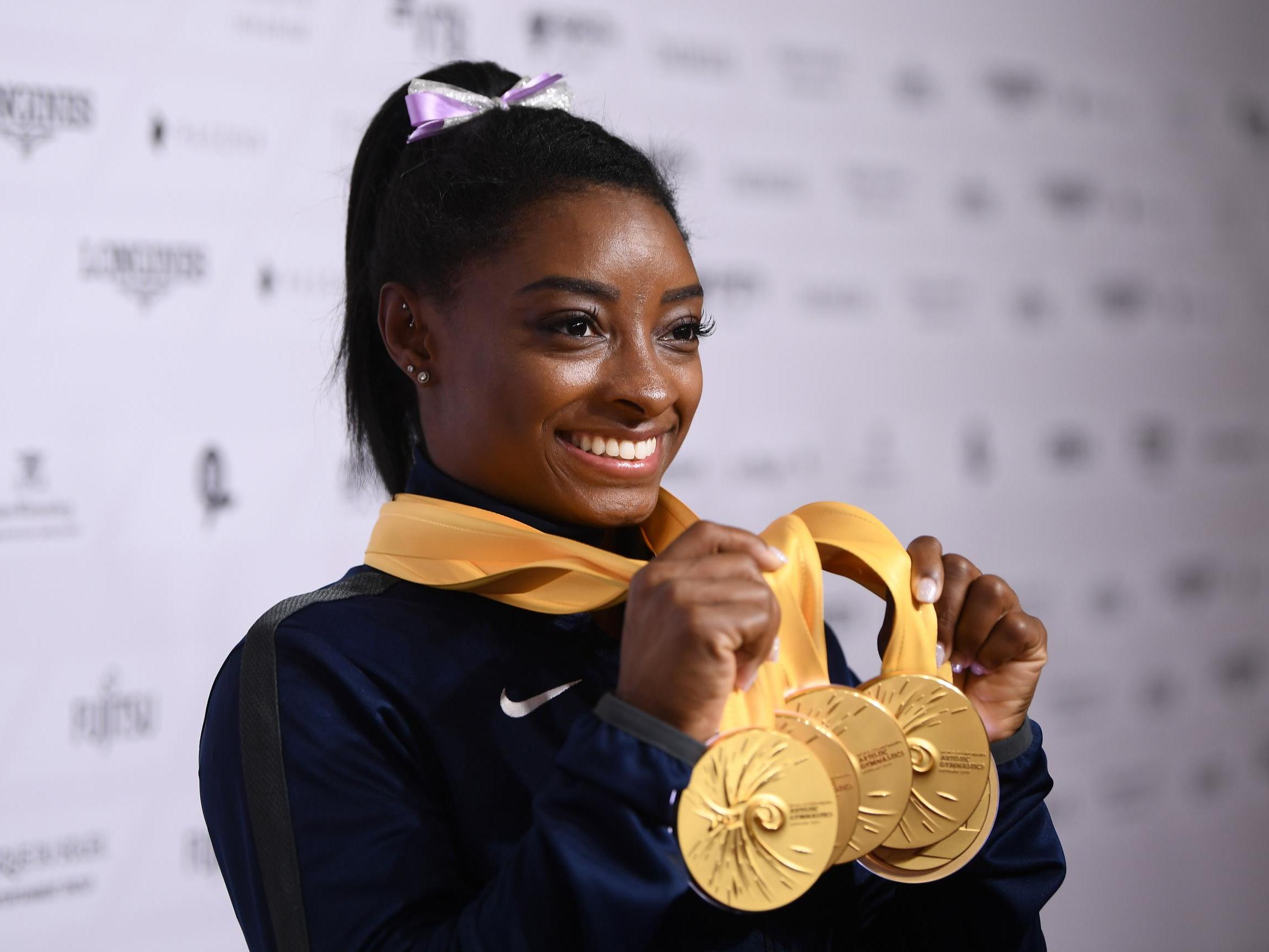Gymnastics enchanted me as a child – stories of sexual abuse in the sport are heartbreaking
How many people will read these stories and decide not to put their child into a gymnastics class? How many will decide to pull them out if they’re already attending?


Your support helps us to tell the story
From reproductive rights to climate change to Big Tech, The Independent is on the ground when the story is developing. Whether it's investigating the financials of Elon Musk's pro-Trump PAC or producing our latest documentary, 'The A Word', which shines a light on the American women fighting for reproductive rights, we know how important it is to parse out the facts from the messaging.
At such a critical moment in US history, we need reporters on the ground. Your donation allows us to keep sending journalists to speak to both sides of the story.
The Independent is trusted by Americans across the entire political spectrum. And unlike many other quality news outlets, we choose not to lock Americans out of our reporting and analysis with paywalls. We believe quality journalism should be available to everyone, paid for by those who can afford it.
Your support makes all the difference.This week fashion bible Vogue released the cover of its next issue starring the greatest gymnast of all time: Simone Biles. Biles’s energy, smile and seemingly superhuman talent for the sport means her celebrity transcends the limits of gymnastics enthusiasts. In the accompanying interview, Biles talks about trying to keep fit over the course of a pandemic (despite being a solo sport performance-wise, gymnastics is not a sport well disposed towards social distancing), the lack of black gymnasts to look up to when she was a young girl and her journey to realisation that she, too, was a victim at the hands of the infamous USA Gymnastics doctor Larry Nassar.
Nassar began working with USAG in 1986 as an athletic trainer and served as the national medical director from 1996 to 2014. Since the national organisation severed ties with him in 2015, Nassar pleaded guilty to possession of pornographic images of children, first-degree criminal sexual conduct with minors and criminal sexual assault and more. As the news of the former doctor’s crimes emerged, we learned that the highest profile American gymnasts at the time were survivors of his abuse.
The US team for the 2012 Olympics in London dubbed themselves the “Fierce Five” after complaints their initial nickname from the US media – the “Fab Five” – was already attributed to a basketball team. Teammates McKayla Maroney and Jordyn Wieber came up with the new name with the former, stating: “There have been Fab Fives in the past but I like Fierce Five because we are definitely the fiercest team out there.” The women would go on to win team gold and two individual golds. Later, all five revealed they had been abused by Dr Nassar.
Recently released Netflix documentary Athlete A tells the story of the journalists at The Indianapolis Star as they worked to expose Nassar’s history of abuse. But it also lays bare the cold, demanding culture of fear that pervades elite gymnastics in America. Girls and young women pushed to extremes of training, dieting and exercise all while smiling for the cameras and promoting the image of wholesome, hard-working talent that spins so much money for USA Gymnastics.
Gymnastics is one of those sports that captivates the world every four years when the summer Olympics rolls around. What those young men and women can do is among the most astonishing feats of physical achievements ever seen. Throwing triple somersaults, pirouetting on one foot three times on a piece of wood, four inches wide and four foot off the floor, and spinning around a wooden bar at speed, which they then willingly let go of before twisting their body and catching the bloody thing again. It’s truly jaw-dropping.
It certainly enchanted me – after months of nagging my parents, I was set loose in my local gymnastics club as a young girl. Every Saturday morning was spent at gymnastics class, and after showing a small amount of ability, I was soon training on Tuesdays and Fridays as well. I learned how to do cartwheels and handstands and backflips and somersaults.
I was never anywhere near the levels of talent seen at the Olympic Games but I put in the work outside of training to get marginally better, I watched TV sitting in splits, I did sit-ups and press-ups and practiced my back walkovers in the living room (much to my mother’s fear for her nice lamps). I competed in local and regional competitions and I even won medals. I subscribed to gymnastics magazines and whooped with joy if ever the BBC showed the World Championships. (Nowadays the BBC regularly airs gymnastics competitions, thanks to an increased interest in the sport here – thank you Beth Tweddle! – and the fact that the BBC has lost a lot of the broadcast rights to other sports means there’s more airtime for smaller sports.)
It felt nice to be good at something. And to be part of something – the friends I made at gymnastics aged seven are still friends of mine to this day. As we grew up together and, sadly, didn’t become world or Olympic champions, we sat our coaching exams together and revelled in passing on our love of the sport to the younger generations – even if it did mean forsaking Saturday morning lie-ins for all of our teenage years and early 20s.
For years in the Nineties, the top gymnastics coach in the world was considered to be Bela Karolyy – coach of the Magnificent Seven (the name given to the USA gymnastics team at the 1996 Atlanta Olympics). Karolyy moved to the United States after having produced Romania’s most famous and beloved sporting export: Nadia Comaneci (the first gymnast ever to be awarded a perfect 10 at the Olympics – in this instance, at Montreal in 1976). We, as young coaches, marvelled at the skills Karolyy and his wife, Marta, managed to coax out of their gymnasts.
But the documentary shows the astonishing levels of discipline and, at times, terror that the couple used at their training camps in Texas. Prior to the Karolyy success, these unforgiving conditions were perceived to only really happen in the training regimes of gymnasts in eastern bloc countries.
However, as the sport grew and became more and more popular worldwide, these nasty practices seem to have silently spread alongside. The more success seen by coaches such as Karolyy, the more others thought the only way to their own success was to emulate everything he did and said.
On Thursday night, top British gymnasts Becky and Ellie Downie released a statement about the normalisation of “cruel” behaviour, the dangerous levels of over-training to which they were subjected and the constant commentary on their need to diet, lose weight and document what they ate, proving that Great Britain’s elite gymnasts have not been immune to abusive treatment themselves.
Reading all these stories about my beloved sport is heartbreaking – for the young women who have suffered at the hands of abusers and also for the future of the sport itself. How many people will read these stories and decide not to put their child into a gymnastics class? How many will decide to pull them out if they’re already attending?
Why does this belief persist that the only route to success at an elite level can only come about through breaking someone’s spirit until they are a husk only capable of following instruction?
As the Downie sisters say in their statement, this culture of fear is “often ineffective”. For years now, studies have shown that a culture of fear in the workplace does not drive results. Of course, elite performance in sport requires a coach to push their athletes but it does not need to be driven by bullying and extreme conditions where the physical safety of the athlete is compromised due to exhaustion from over-training or hunger.
Simone Biles is not only an outlier among elite gymnasts because of her technical ability and innate talent to pull off moves others could barely even dream up – but also because of her endurance. When she competes at Tokyo 2021, she will be 26, a full decade older than many of the gymnasts competing against her. The career of a top-flight gymnast is short, with few managing more than one or two Olympic cycles before having to call it a day without even having hit their twenties.
On top of the truly incredible stresses they put their bodies through, the last thing a gymnast needs is constant psychological harassment or, worse still, sexual abuse. The future of the sport needs to be kinder, with the gymnast safety – physically and mentally – the priority no matter what. Otherwise, it may be gone before we know it.
Join our commenting forum
Join thought-provoking conversations, follow other Independent readers and see their replies
Comments